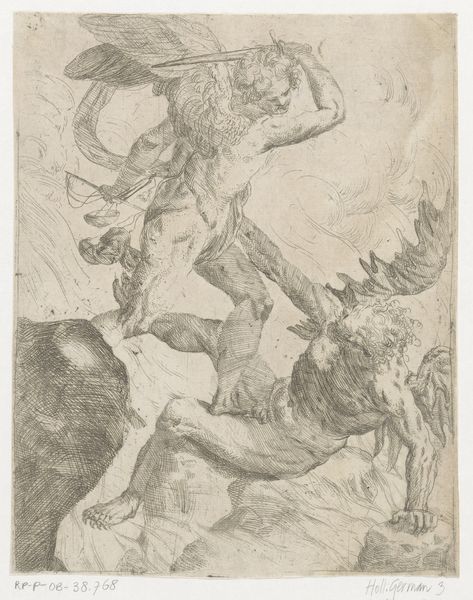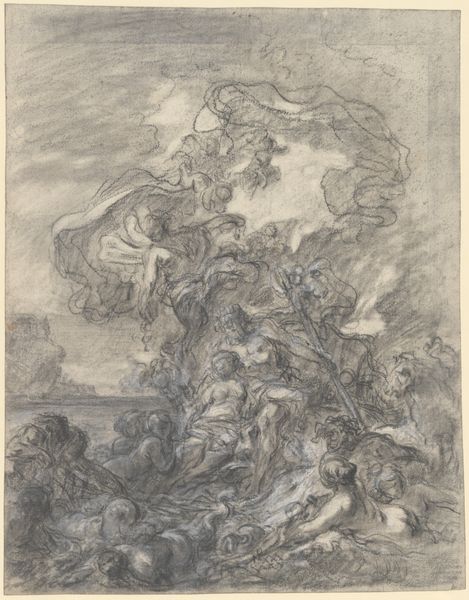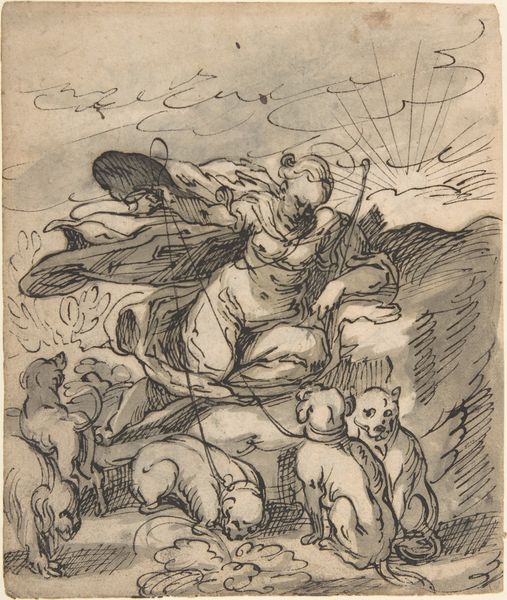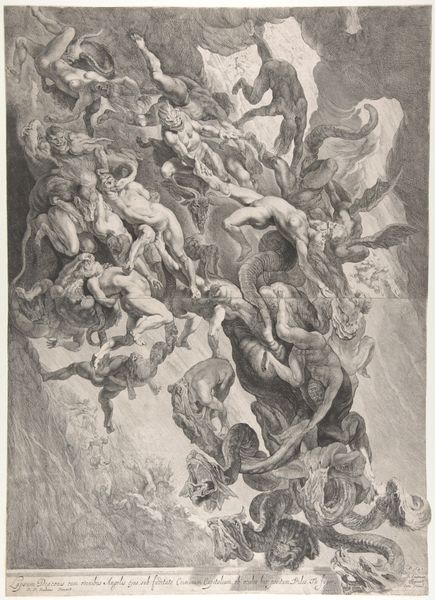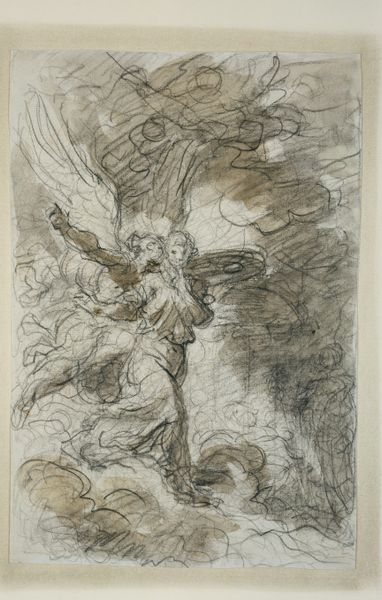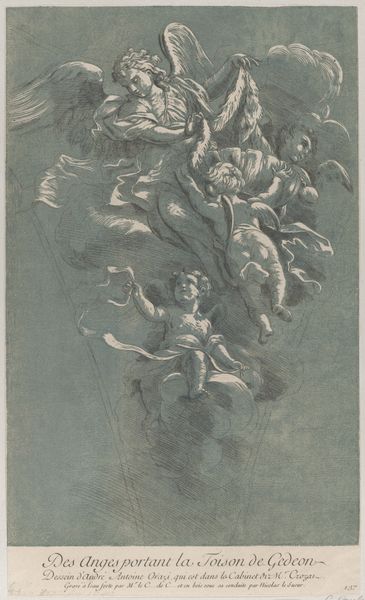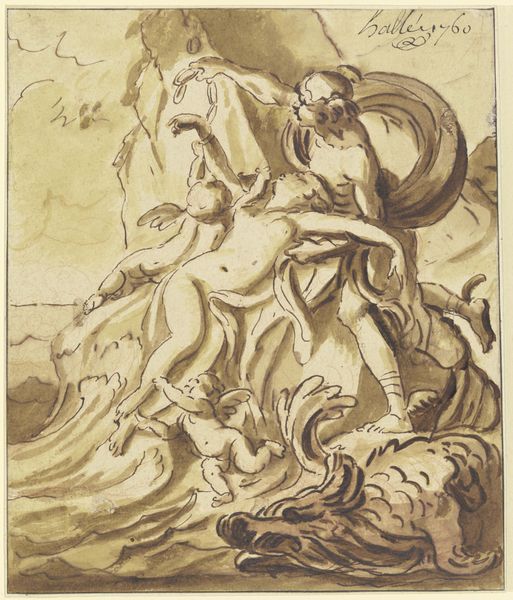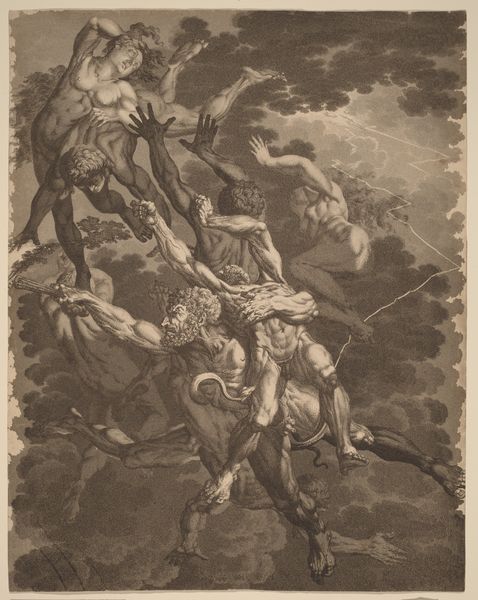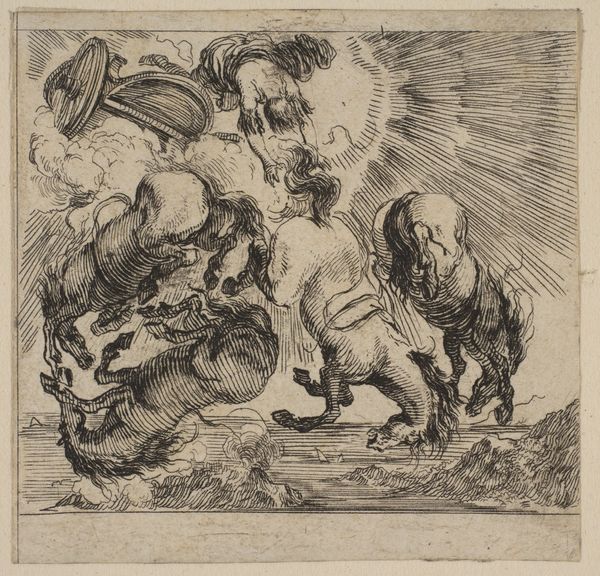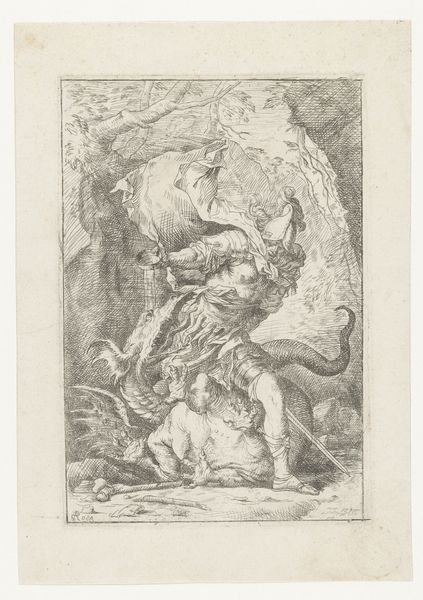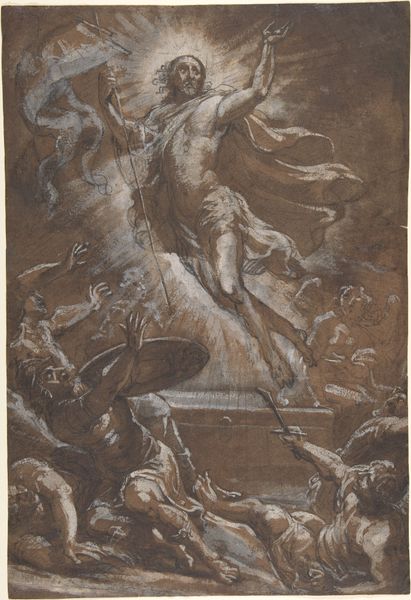
drawing, chalk
#
drawing
#
baroque
#
landscape
#
figuration
#
chalk
#
history-painting
Copyright: Public Domain
Curator: A dramatic scene, wouldn't you say? The swirling chaos really grabs you. Editor: It does. We are looking at "The Fall of Phaeton," a chalk drawing created around 1655 by Abraham van Diepenbeeck, currently residing at the Städel Museum. Curator: Diepenbeeck really captures the terror. The tumbling horses, Phaeton’s awkward fall… you can almost feel the heat and the panic of the moment. Editor: Absolutely. It's fascinating how he uses chalk to evoke such a sense of movement. Notice how the density of the lines creates depth and shadow, particularly in the depiction of the horses, to underscore the turmoil of the scene. Curator: The social context is really interesting. Van Diepenbeeck, like many artists of his era, was grappling with these classical myths, adapting them to contemporary sensibilities. How would you connect that historical narrative to material choices, given that he wasn't a metal engraver but a drawing artist? Editor: Right. He seems to highlight the drama with diagonals which form these implied lines that thrust your eye toward a god looming over the horizon with raised thunderbolts in his hand. Note the composition, as well. This vertical thrust of lightning connects that single figure up top to all the downward figures in disarray down below. Curator: It’s also important to consider Diepenbeeck’s patrons and the broader artistic marketplace of the 17th century. What did it mean to produce a history-painting in a medium like chalk, as opposed to oil on canvas, how were these artworks consumed by diverse patrons in baroque period, and who was his target audience, and how did his patrons contribute to that? Editor: Those questions of value certainly influence our perception, now and then. And even from this vantage point, what a tour de force this material is: a masterclass in composition. It leads me to reconsider Diepenbeeck’s engagement with both classical myth and contemporary artistic trends. Curator: I think he provides us with insight on material means and artistic labor for the production of artwork as a complex social and cultural phenomenon, not merely artistic form. Editor: Agreed. The work as both a commodity and cultural expression. It invites a fresh look at the social and political roles the visual arts had during that time.
Comments
No comments
Be the first to comment and join the conversation on the ultimate creative platform.
